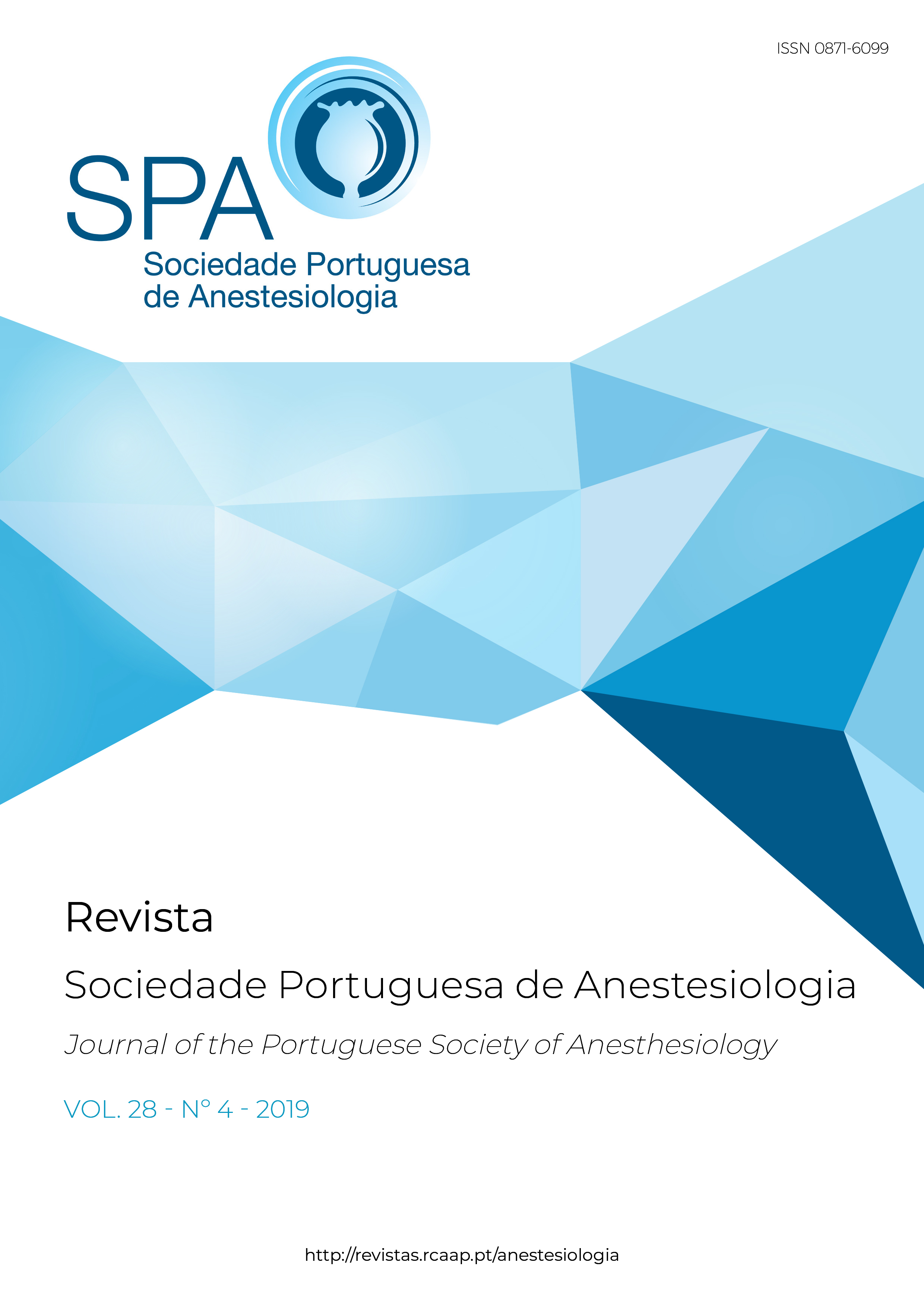Demyelinating Peripheral Polyneuropathy: Anesthetic Implications
DOI:
https://doi.org/10.25751/rspa.17707Keywords:
Anesthesia, Intravenous; Anesthetics, Intravenous; Charcot-Marie-Tooth Disease; Propofol; RemifentanilAbstract
Charcot-Marie-Tooth disease is a demyelinating peripheral polyneuropathy characterized by distal muscular weakness, motor and sensory disorders and skeletal deformities. The main challenges in the anesthetic approach in these patients are related to the adequate use of muscle relaxants and to the risk of malignant hyperthermia.
43-year-old woman, ASA 3, proposed for lower limb varicose vein stripping surgery. History of axonal polyneuropathy with Charcot-Marie-Tooth disease panel.
She presented distal tetraparesis associated with significant motor incapacity, and dysphagia for liquids. General intravenous anesthesia with Propofol and Remifentanil was chosen, without muscle relaxant. The patient remained hemodynamically stable and the procedure was uneventfully.
Although there are concerns with the anesthetic approach of patients with polyneuropathy, the option of general intravenous anesthesia with propofol and remifentanil was adequate and safe in this patient.
Downloads
References
2. Tetzlaff JE, Schwendt I. Arrhythmia and Charcot-Marie-Tooth disease during anesthesia. Can J Anaesth. 2000;47:829.
3. Cordeiro JL, Marques W, Hallak JE, Osório FL. Charcot-Marie-Tooth disease, psychiatric indicators and quality of life: a systematic review. ASN Neuro. 2014; 27: 185– 92. doi: 10.1042/AN20130048.
4. Schmitt HJ, Münster T. Mivacurium-induced neuromuscular block in adult patients suffer-ing from Charcot-Marie-Tooth disease. Can J Anaesth. 2006; 53: 984– 8.
5. Bösenberg A, Larkin K: Anaesthesia and Charcot-Marie-Tooth Disease. S Afr J Anaesth Analgesia. 2006; 12:131-3.
6. Smith JD, Minkin P, Lindsey S, Bovino B. Anesthetic and surgical management of a bilat-eral mandible fracture in a patient with Charcot-Marie-Tooth Disease: a case report. J Oral Maxillofac Surg. 2015; 73:1917.e1-6. doi: 10.1016/j.joms.2015.06.162.
7. Martyn JA, Richtsfeld M. Succinylcholine-induced hyperkalemia in acquired pathologic states: etiologic factors and molecular mechanisms. Anesthesiology. 2006;104:158-69. doi:10.1097/00000542-200601000-00022.
8. Antognini JF. Anaesthesia for Charcot-Marie-Tooth disease: a review of 86 cases. Can J Anaesth. 1992; 39: 398– 400.
9. Aceto P. Cisatracurium-induced neuromuscular block during total intravenous anaesthesia in a patient with Charcot-Marie-Tooth disease. Eur J Anaesthesiol. 2010; 27:670-2. doi: 10.1097/EJA.0b013e3283357060.
10. Ducart A, Adnet P, Renaud B, Riou B, Krivosic-Horber R. Malignant Hyperthermia During Sevoflurane Administration. Anesth Analg. 1995; 80:609-11.
11. Kotani N, Hirota K, Anzawa N, Takamura K, Sakai T, Matsuki A. Motor and sensory disability has a strong relationship to induction dose of thiopental in patients with the hy-pertropic variety of Charcot-Marie-Tooth syndrome. Anesth Analg. 1996; 82:182-6.
12. McSwain JR, Doty JW, Wilson SH. Regional anesthesia in patients with preexisting neurologic disease. Curr Opin Anaesthesiol. 2014; 27:538-43. doi: 10.1097/ACO.0000000000000107.
13. Schmitt HJ, Huberth S, Huber H, Münster T. Catheter-based distal sciatic nerve block in patients with Charcot-Marie-Tooth disease. BMC Anesthesiol 2014;14:8. doi: 10.1186/1471-2253-14-8.
14. Pasha TM, Knowles A. Anaesthetic management of a patient with CharcotMarie-Tooth disease for staged diaphragmatic plication. Br J Anaesth. 2013; 110: 1061– 3. doi: 10.1093/bja/aet142.
Downloads
Published
How to Cite
Issue
Section
License
Articles are freely available to be read, downloaded and shared from the time of publication.
The RSPA reserves the right to commercialize the article as an integral part of the journal (in the preparation of reprints, for example). The author should accompany the submission letter with a declaration of copyright transfer for commercial purposes.
Articles are published under the terms of the Creative Commons Attribution Non-Commercial License (CC BY-NC).
After publication in RSPA, authors are allowed to make their articles available in repositories of their home institutions, as long as they always mention where they were published.


